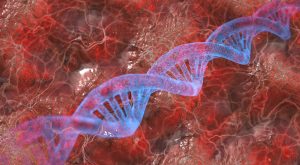If you can live to 2050 you may never die. These are the startling and perhaps click-bait style words of Dr Ian Pearson, an applied mathematics and theoretical physics graduate from Queens University, Belfast who now works as a speaker, and futurist advising companies around the world on the future and what they can expect.
It’s a startling pronouncement that caused shockwaves of media-attention across the globe, but just how accurate is it?
“There are quite a lot of people interested in living forever,” explains Pearson. “There always has been, but the difference now is tech is improving so quickly, lots of people believe they can actually do it.”
And scientists in the field of life-extension medicine and biotechnology are certainly trying.
Numerous teams in highly funded labs are currently inventing new medical therapies that they believe will allow humans to stay young and healthy for possibly a thousand years. Last year, a paper published in Nature promised that there may be no natural limit for a human lifespan.
So how might this happen and what are the most likely ways you could live to see in the New Year in the year 3000?
Building new body parts
Championed by the speaker and biomedical gerontologist Aubrey de Grey, some scientists are looking into the idea that we should start treating our bodies much as we would old cars, which is to say replacing the parts that are defective before they can do worse harm thereby keeping our bodies in “showroom condition”.
Different teams of experts are working on developing these replacement parts in a variety of ways, and despite the fact that it has proven incredibly tricky, they are now having some success.
This year a number of different teams have announced plans to make use of pig organs and parts to create replacements that are fit for humans through the genius of gene-editing, which allows researchers to effectively trick the human body into believeing the organs are not, in fact, foreign objects.
Researchers in South Korea are now expected to transplant pig corneas into humans in less than a year, and scientists at Massachusetts General Hospital in Boston have already started a six-person clinical trial using “blankets” of pig skin to temporarily protect the skin of burn victims. At the University of Alabama at Birmingham’s (UAB) medical school, researchers are planning to transplant pig kidneys into adults and hearts into struggling newborns, while in Cambridge, Massachusetts, a startup called eGenesis is trying to create pigs whose organs can be safely transplanted into humans.
“I think this is a magical point in the field of [animal transplants],” William Westlin, eGenesis’ executive vice-president for research and development told the Guardian. “It’s no longer a question of if. It’s just a question of when.”
Even if that approach fails other teams are working toward creating human organs using 3D printers loaded with living cells, which could one day make human organ donors redundant.
In 2016, a team at Jennifer Lewis’ lab at Harvard developed a novel printing method that uses ‘inks’ consisting of kidney cells and surrounding material. This ink has already allowed the research group to recreate part of the nephron, the functional unit of the kidney, which is responsible for filtering the blood and reabsorbing all of the useful components and excreting out the rest. As one of the hardest organs to recreate this is a huge step toward finally creating a working example.
In April a team of researchers at Tel Aviv University in Israel were successfully able to 3D-print a rabbit-sized version of a human heart using human tissue and vessels.
“This is the first time anyone anywhere has successfully engineered and printed an entire heart replete with cells, blood vessels, ventricles and chambers,” said Professor Tal Dvir, who led the team. “People have managed to 3D-print the structure of a heart in the past, but not with cells or with blood vessels.”
A third viable method may be to clone organs for a person out of their own stem cells. As far back as 2012 scientists announced they were able to create stem cells out of adult blood cells, which they could then technically use to build any other cells in the body, and eventually organs. Should they succeed these organs would not only be exact matches in terms of size, but also in every genetic way for the receiver.
Nanobots

Another avenue for a potentially greatly increased life is the use of nanotechnology, in which scientists approach bodily interactions at an atomic level, and develop incredibly tiny machinery or systems to target challenges on that level.
Currently, scientists are experimenting with the use of nanoparticles to guide and deliver chemotherapy drugs and other tumour busting treatments directly onto cancer cells.
Researchers at the University of Santa Barbara have developed a nanoparticle that can deliver drugs to the plaque on the wall of arteries, which could help destroy the causes of heart disease. Meanwhile, researchers at MIT and Harvard Medical School have used a similar drug-carrying nanoparticle to deliver a minuscule patch to membranes that are exposed in damaged artery walls. This allows the nanoparticle to release a drug at the site of the damage, which helps prevent the growth of scar tissue that can clog arteries, thereby further reducing the effects of heart disease.
Without a doubt, the boldest proposed use of Nanotechnology would be in the development of nanorobots, which could exist permanently inside us to repair damage to our bodies at the cellular level.
Currently, scientists are only at the stage of developing the techniques for building these atomic-sized armies of nanorobots, which they believe would be able to patch the damage done to the DNA in our cells by radiation or chemicals as that damage is caused.
In his book “Engines of Creation” Eric Drexler states, “Aging is fundamentally no different from any other physical disorder; it is no magical effect of calendar dates on a mysterious life-force. Brittle bones, wrinkled skin, low enzyme activities, slow wound healing, poor memory, and the rest all result from damaged molecular machinery, chemical imbalances, and misarranged structures. By restoring all the cells and tissues of the body to a youthful structure, repair machines will restore youthful health.”
Mind-uploading

One of the largest believers in nanotechnology is American author, inventor and futurist Raymond Kurzweil, but for Kurzweil nanobots are just the beginning of a long blurring of the lines between man and machine.
Kurzweil believes that by 2029 man will have developed machines that will pass the classic artifical intelligence “Turing test” and that by 2045 a moment known as “the singularity” will occur in which AI will overtake humanity in intelligence. For many thinkers the singularity is the moment when AI starts to enslave humanity, but Kurzweil believes it will be a massive leap forward in our evolution. He envisions the same technology that will make AIs more intelligent giving humans a boost as well.
“What’s actually happening is [machines] are powering all of us,” Kurzweil said during the an interview with SXSW. “They’re making us smarter. They may not yet be inside our bodies, but, by the 2030s, we will connect our neocortex, the part of our brain where we do our thinking, to the cloud…. We’re going to get more neocortex, we’re going to be funnier, we’re going to be better at music. We’re going to be sexier … We’re really going to exemplify all the things that we value in humans to a greater degree.”
Ultimately this could see humanity intrinsically intertwined with machinery, living with their minds uploaded to a cloud, and potentially interacting with the world through fully machined robots.
Pearson’s vision of the future is more fanciful.
“The mind will basically be in the cloud, and be able to use any android that you feel like to inhabit the real world,” he says, imagining a scenario where each person owns two or three physical android bodies that they can move between at will.
Additionally, he suggests that in 50 years time, we might be able to hire an android anywhere in the world “just like a hire car”, and upload your consciousness into it.
“If you wanted to spend the evening in Australia, going to the Sydney Opera House, you could use an android.”
If he is right, then this means that even when your original bodies dies, you’d still be able to use your digital mind — stored on a computer — and live on forever using highly realistic robot bodies.


